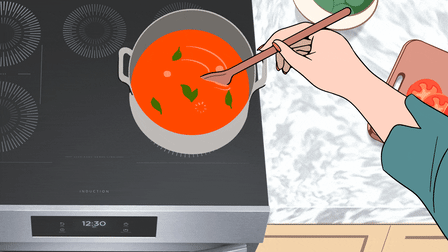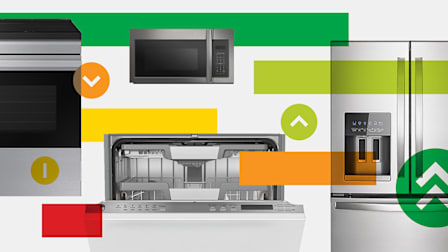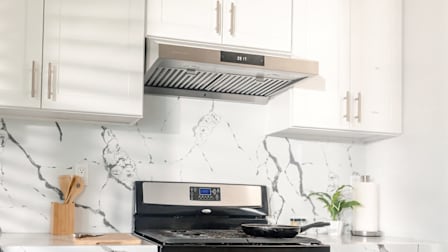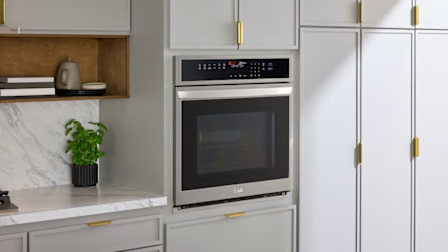Induction vs. Electric Cooktop: Which Should You Buy?
Consumer Reports' experts parse out what might work best for your budget and household
When you shop through retailer links on our site, we may earn affiliate commissions. 100% of the fees we collect are used to support our nonprofit mission. Learn more.

Gas cooktops have long been a favorite of serious cooks, or those aspiring to be one. But electrics cooktops are having a moment. Fueled, in part, by climate concerns and reports on the possible harmful health effects of gas ranges, many homeowners are embracing electric. And that means having to decide between an induction cooktop or a smoothtop model. CR’s experts can help you make the right choice.
Induction cooktops and conventional electric smoothtops are identically sized, usually black, and come with a smooth glass surface. Some have knobs and others have digital touch controls, but by and large, they’re big rectangles. What these appliances share in design and intended function masks key differences in how each works. Sure, each can boil water or simmer tomato sauce, but they go about it very differently.
What’s the Difference Between Induction and Electric Cooktops?
Conventional electric cooktops cook with a series of heat-producing elements beneath the glass surface. When a burner is turned on, the element generates heat. That heat transfers first to the glass cooking surface above, and in turn, the glass surface heats your cookware.
In contrast, induction cooktops don’t actually produce heat. Instead, they generate electric pulses that transfer directly into your cookware (which needs to be magnetic for the appliance to do its job). This causes the pan to get hot without the need for the glass surface to act as the “middleman.”
Who Should Get an Induction Cooktop?
As a result of their unique makeup, induction cooktops have a distinct set of benefits and drawbacks. You should consider an induction cooktop if:
You want to cook (slightly) faster. When you turn on an element, the pan gets hot immediately. That means, as our tests prove, water can boil as much as 20 to 40 percent faster—not life-altering, but a plus for any parent racing to cook a pot of pasta on a busy weeknight.
You tend to burn things. An induction cooktop’s quick response time extends beyond starting up the heat—it’s helpful when you want to turn it down, too. For instance, if you’re searing a piece of salmon on a typical electric cooktop, your food may scorch or burn even after you turn the heat down. “That’s because the glass takes a while to cool," says Tara Casaregola, CR’s engineer who oversees cooktop testing. But with induction, once you turn the element off, the surface cools far faster, dramatically reducing the risk of burning food.
Who Should Get a Conventional Electric Cooktop?
Because electric smoothtops have been the de facto choice for decades, you’ll find plenty of options at different prices. A conventional electric smoothtop is right for you if:
You don’t have the right cookware and don’t want to buy more. Electric is compatible with any kind of cookware, as long as it has a fairly flat base that makes contact with the glass surface. That includes non-magnetic options, like aluminum, anodized aluminum, and copper. In contrast, induction works only with magnetic metals, like cast iron and stainless steel. It’s worth noting, however, that many cookware manufacturers have started retrofitting more options with an induction-compatible base. If you want to test a favorite pan in your own kitchen, stick a magnet against it and see whether it sticks. If so, that pan will work on an induction cooktop.
You prefer to save money on the initial purchase and don’t have time to shop around. In general, electric smoothtops are often much cheaper than their induction counterparts, though there is no hard-and-fast rule about how much so. Take Bosch. Its 30-inch 800-series cooktop in regular electric can be found for around $1,400; if you opt for its induction equivalent, the price soars to around $2,350. In contrast, at around $780, a Frigidaire Gallery 30-inch induction cooktop is not too far off from its conventional electric counterpart, which costs around $750.
In short, it pays to shop around and compare models once you’ve decided between electric and induction. Whichever you choose, you may be eligible for rebates under the Inflation Reduction Act, particularly if you’re converting from gas.
You’re used to cooking with a smoothtop and prefer to stick with your routine. There’s a learning curve when you switch to induction, and if you’re not the most natural cook, there’s a case to be made for sticking with what you know. While induction may get the edge in all technical measures, that might not matter to you if you have to adjust all of your tried-and-true recipes to get consistent results.
Below we highlight the best options from our tests, including 30- and 36-inch options in both induction and conventional electric models. Keep in mind that these are a small sampling of what you’ll find in our ratings, which offer induction and electric cooktops starting around $600 and climbing to over $5,000.
































